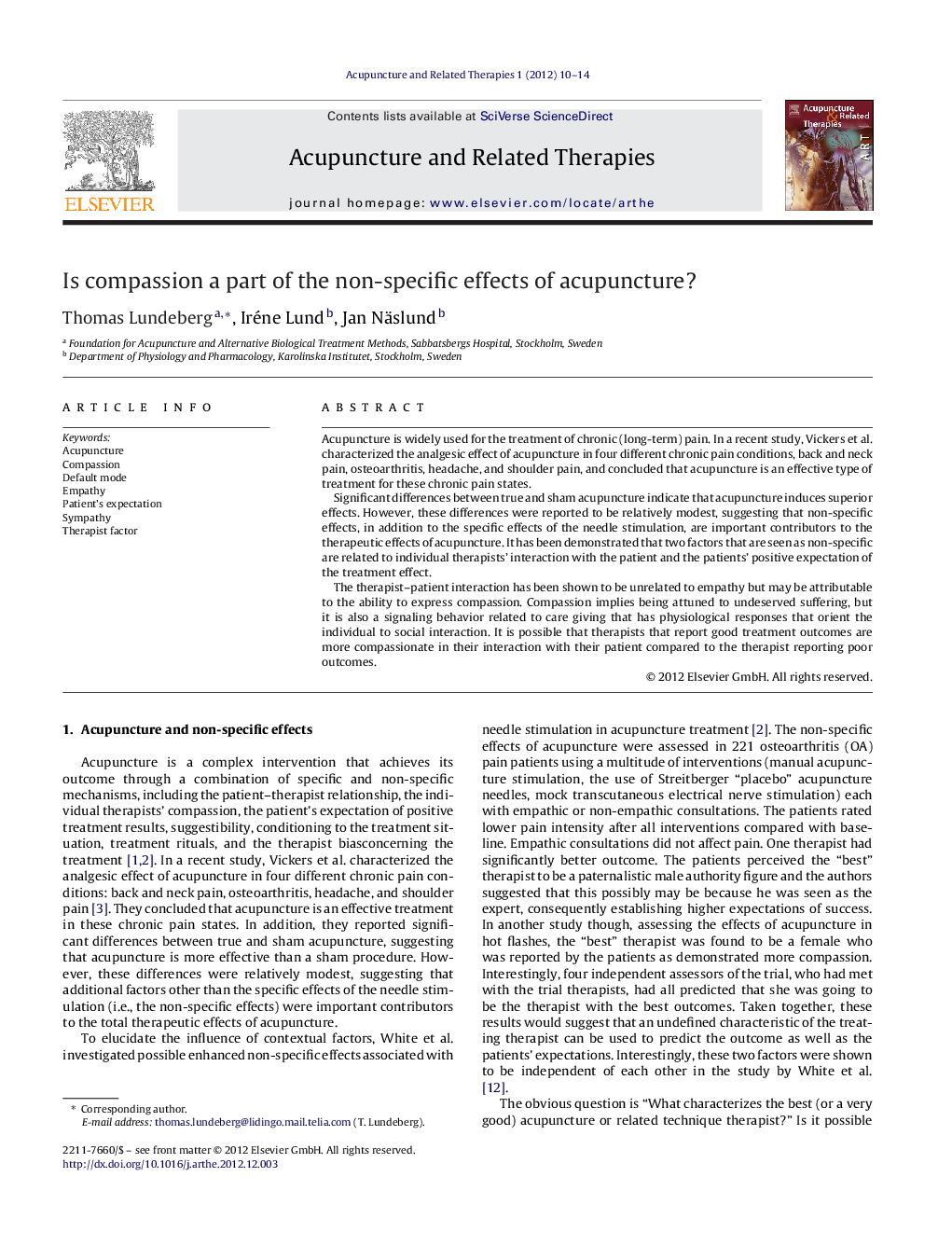| کد مقاله | کد نشریه | سال انتشار | مقاله انگلیسی | نسخه تمام متن |
|---|---|---|---|---|
| 2613915 | 1134966 | 2012 | 5 صفحه PDF | دانلود رایگان |
Acupuncture is widely used for the treatment of chronic (long-term) pain. In a recent study, Vickers et al. characterized the analgesic effect of acupuncture in four different chronic pain conditions, back and neck pain, osteoarthritis, headache, and shoulder pain, and concluded that acupuncture is an effective type of treatment for these chronic pain states.Significant differences between true and sham acupuncture indicate that acupuncture induces superior effects. However, these differences were reported to be relatively modest, suggesting that non-specific effects, in addition to the specific effects of the needle stimulation, are important contributors to the therapeutic effects of acupuncture. It has been demonstrated that two factors that are seen as non-specific are related to individual therapists’ interaction with the patient and the patients’ positive expectation of the treatment effect.The therapist–patient interaction has been shown to be unrelated to empathy but may be attributable to the ability to express compassion. Compassion implies being attuned to undeserved suffering, but it is also a signaling behavior related to care giving that has physiological responses that orient the individual to social interaction. It is possible that therapists that report good treatment outcomes are more compassionate in their interaction with their patient compared to the therapist reporting poor outcomes.
Journal: Acupuncture and Related Therapies - Volume 1, Issue 1, 2012, Pages 10–14
